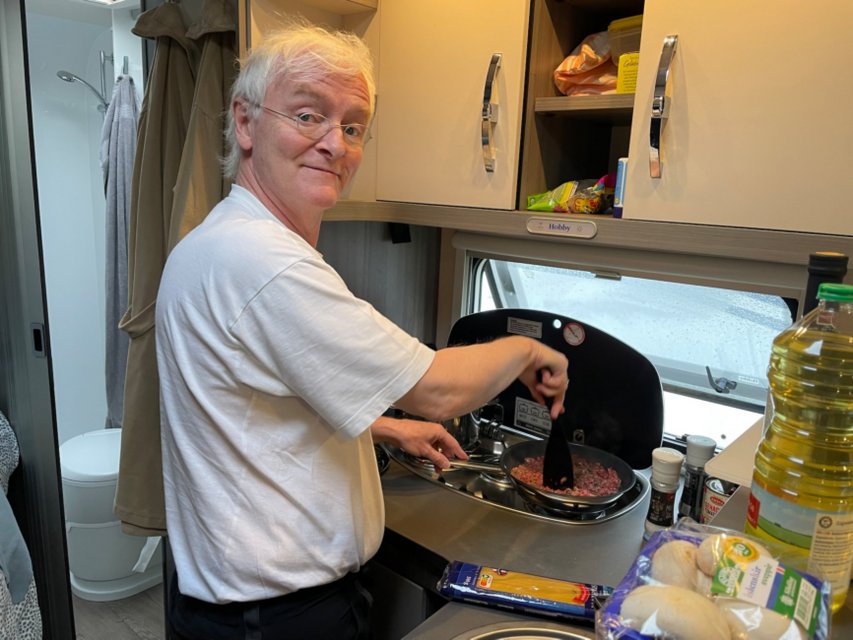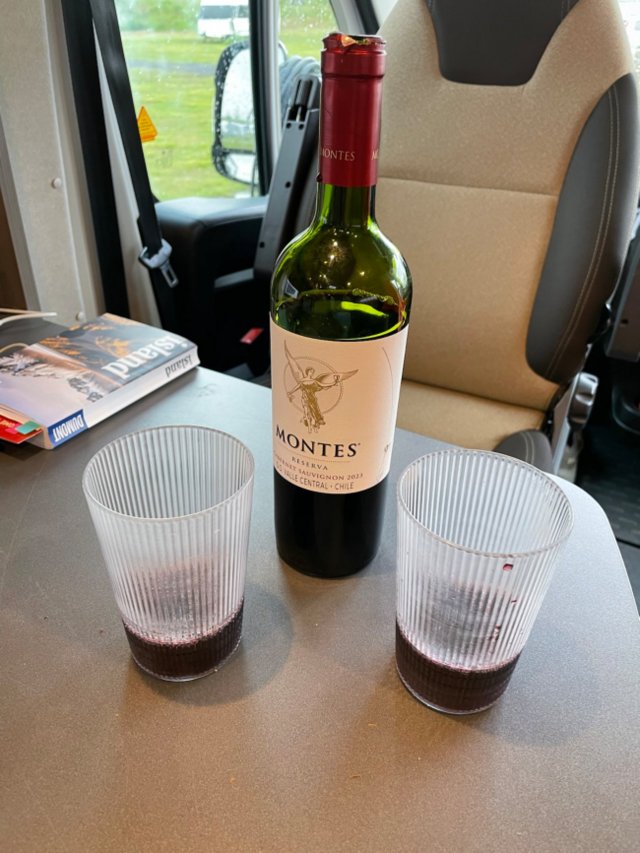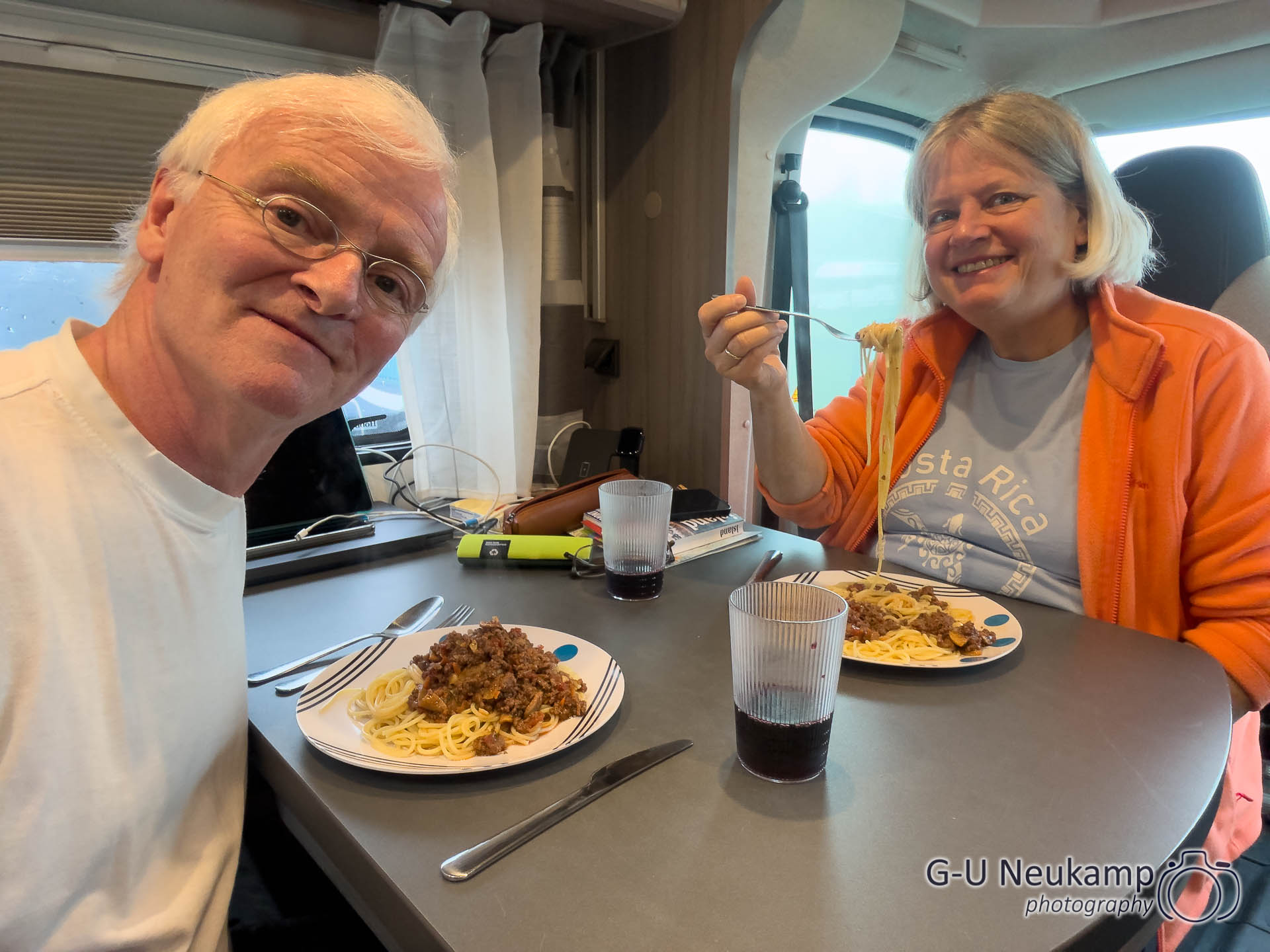June 8th, 2025
After a pleasant night - we slept very well in our motorhome - we enjoyed our first breakfast in the camper, which was really cool. The shower worked very well too. Then we set off for Þingvellir National Park. Alaska lupines were growing everywhere along the roadside, a beautiful purple sight to behold.
Due to its great historical and geological significance, Þingvellir is considered Iceland’s national sanctuary. Iceland’s first national park was established there in 1928. The area around Þingvellir has been included in the UNESCO World Heritage List because of its outstanding universal value.
The name Þingvellir literally means “plain of the people’s assembly” and is considered a symbol of Icelandic history. In 930, the Alþingi, the Icelandic parliament, was founded here—the oldest parliament still in existence in the world. For almost nine centuries, until 1798, the assemblies took place on the banks of the Öxará. Numerous formative events in the country’s history took place here, which is why Þingvellir is considered by many Icelanders to be the true cradle of their nation.
The fascinating landscape of Þingvellir was created in the unique geological environment of a rift between the North American and Eurasian continental plates. Here, tectonic forces tear apart the lava fields and form spectacular fissures and gorges. Particularly impressive is the Almannagjá gorge, which is considered the highlight of the national park.
Before reaching the actual parking lot, there was a nice viewpoint overlooking the lake Þingvellirvatn. This should be the largest lake in Iceland. In addition, the park is located between the continents, so to speak, and is drifting apart. The gorges can be clearly seen from here:
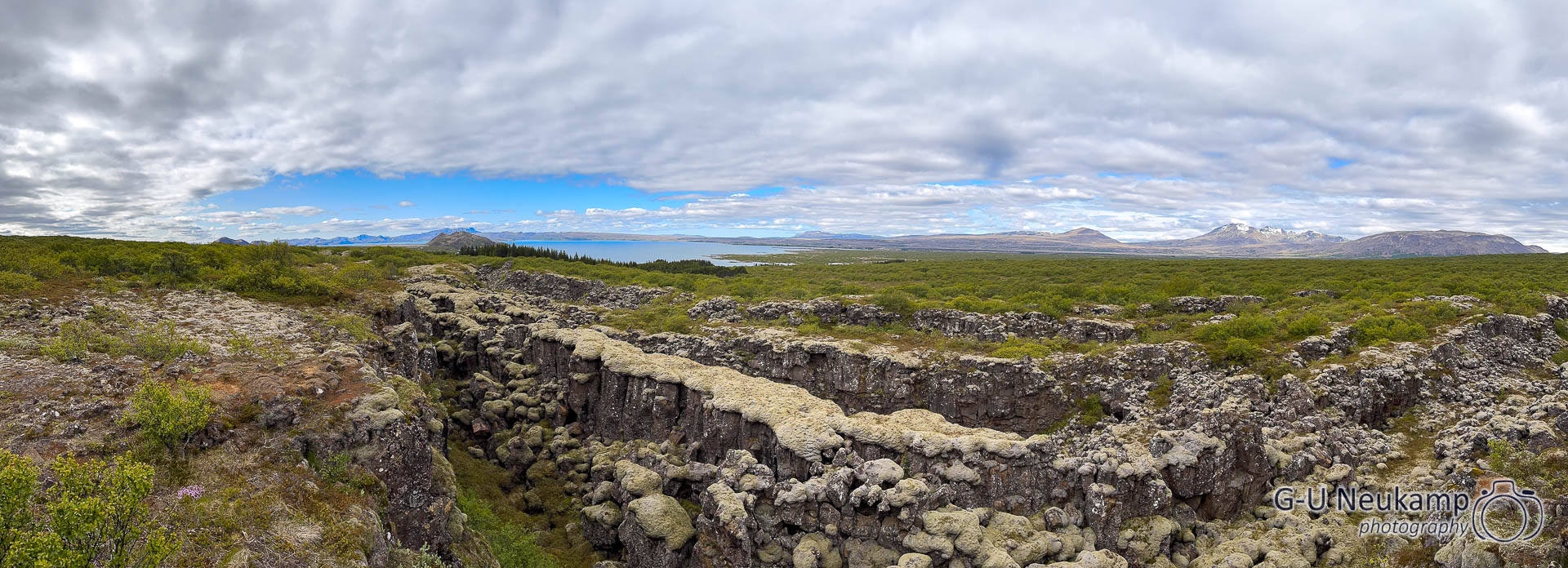
I actually wanted to fly my drone here, but that’s not allowed in the national park and there were a lot of people around. Þingvellir is located on the so-called “Golden Circle” and is only about a 40-minute drive from the capital Reykjavik, making it a very popular destination for day trips. In fact, the whole park is quite a tourist attraction and therefore full of people. Not really what we were looking for, but it is very beautiful here. It’s definitely worth seeing.
In addition to our first waterfall in Iceland, Öxarárfoss, the small church Þingvallakirkja and the five-gabled Þingvellir house were also worth seeing. The house contains the offices of the Icelandic Prime Minister (gables 1-4), the park manager, and the priest of the small church (gable 5).
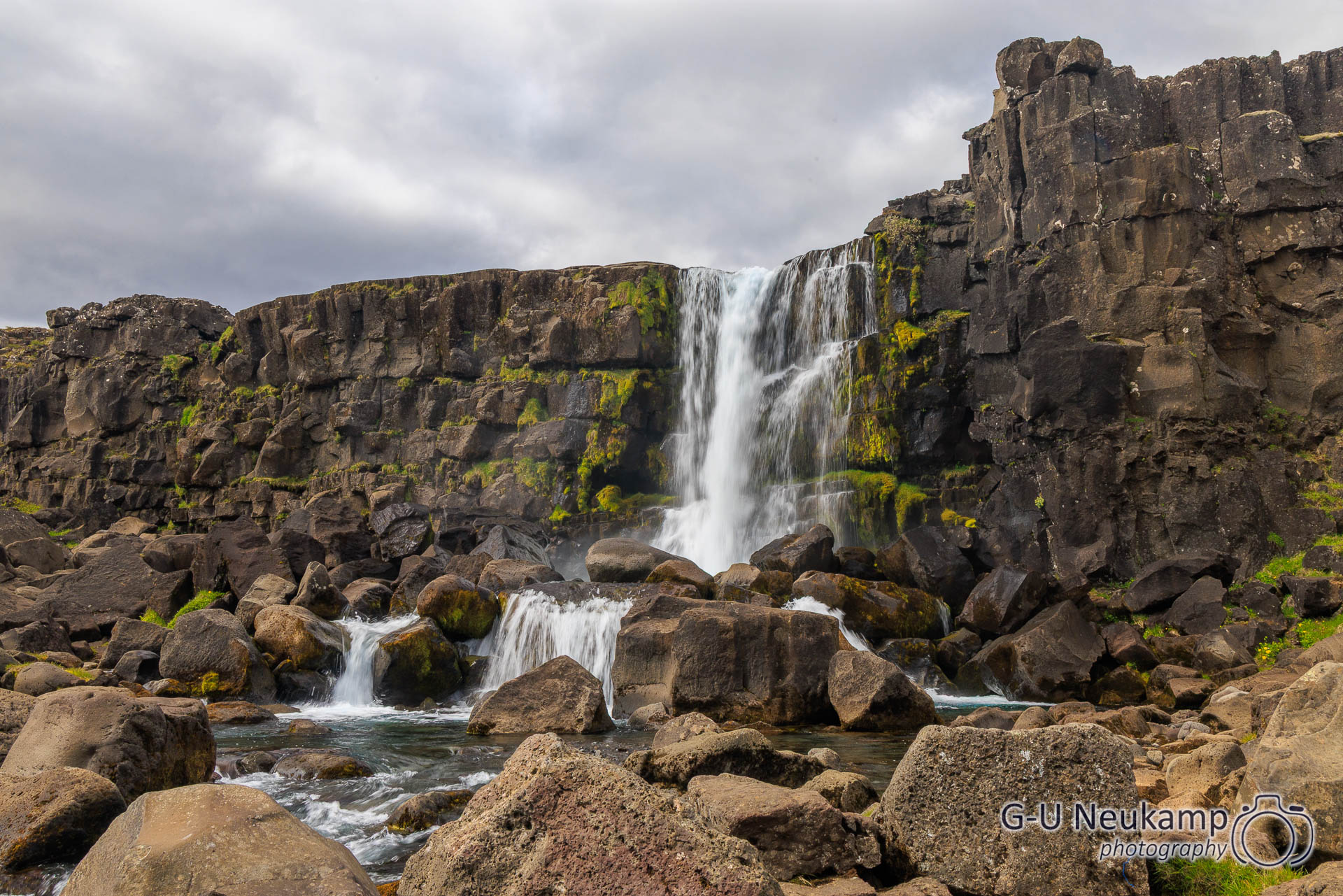
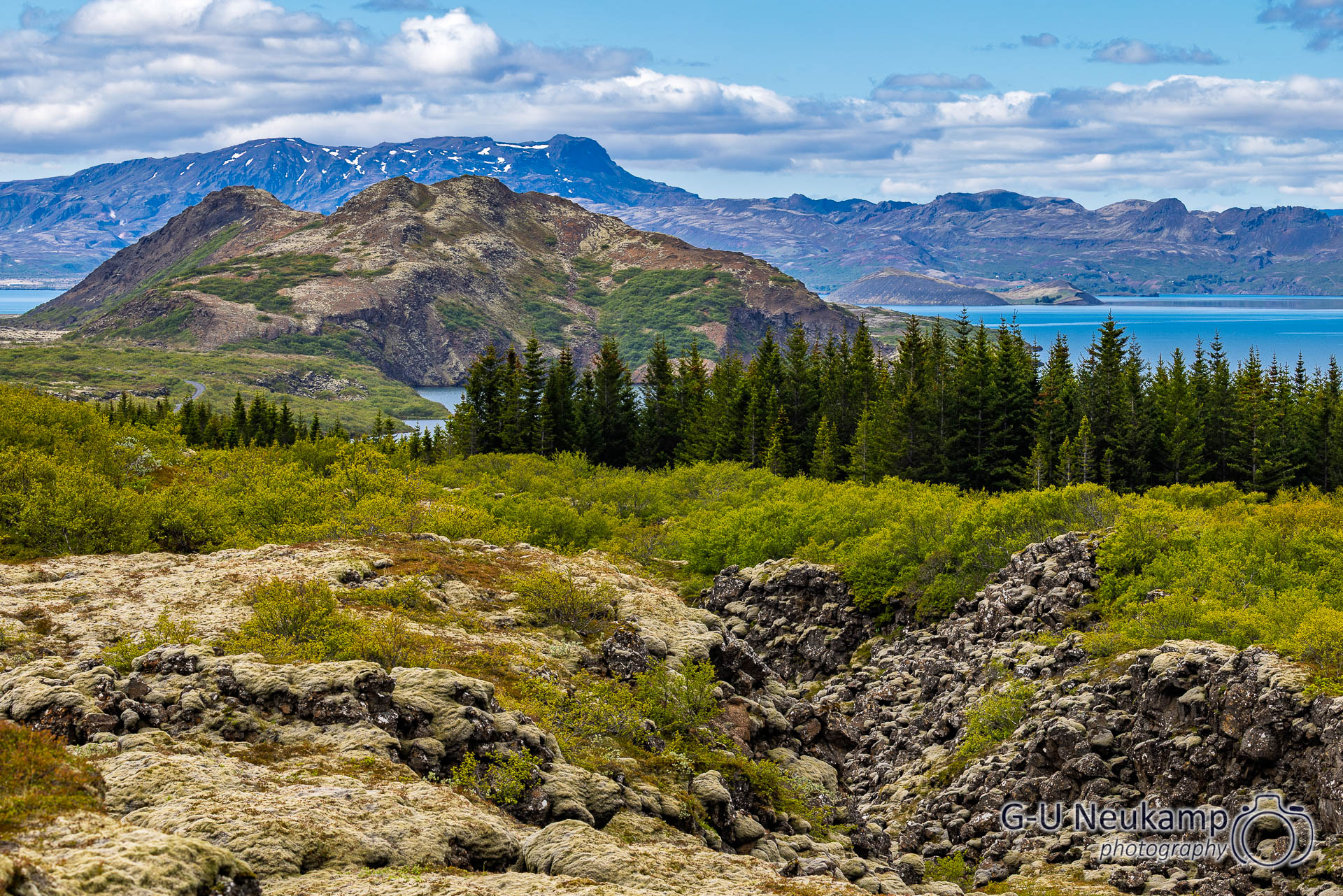
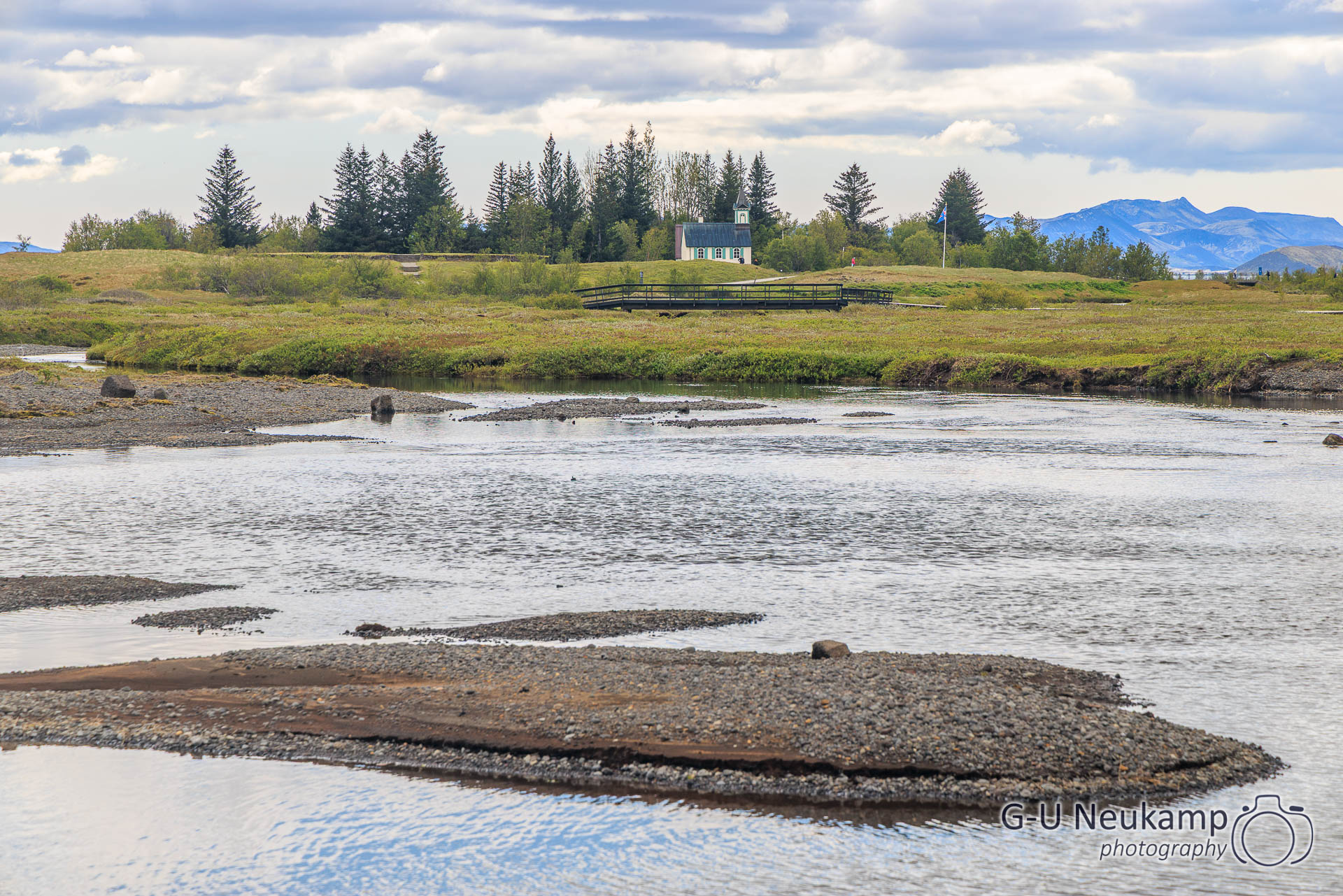
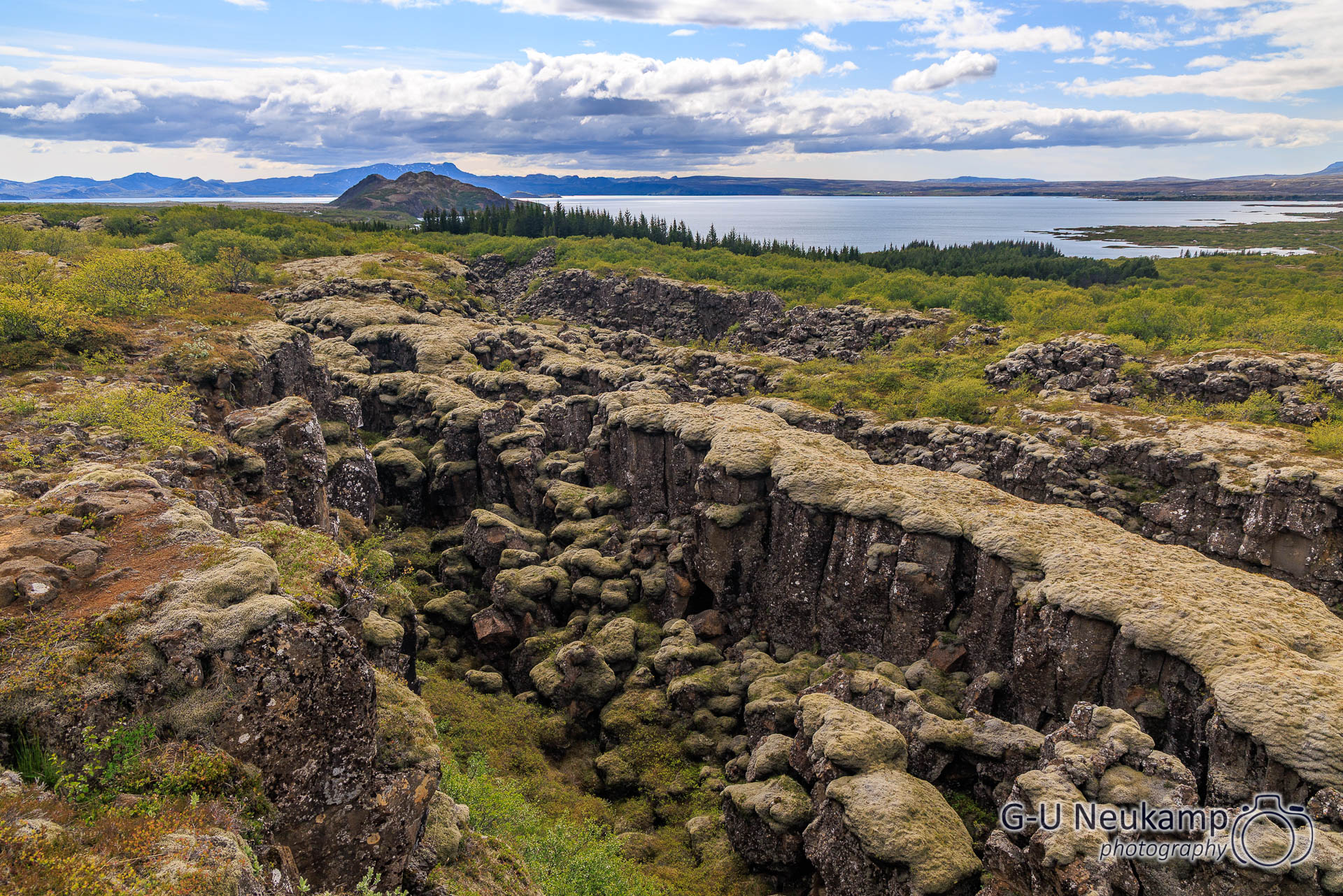
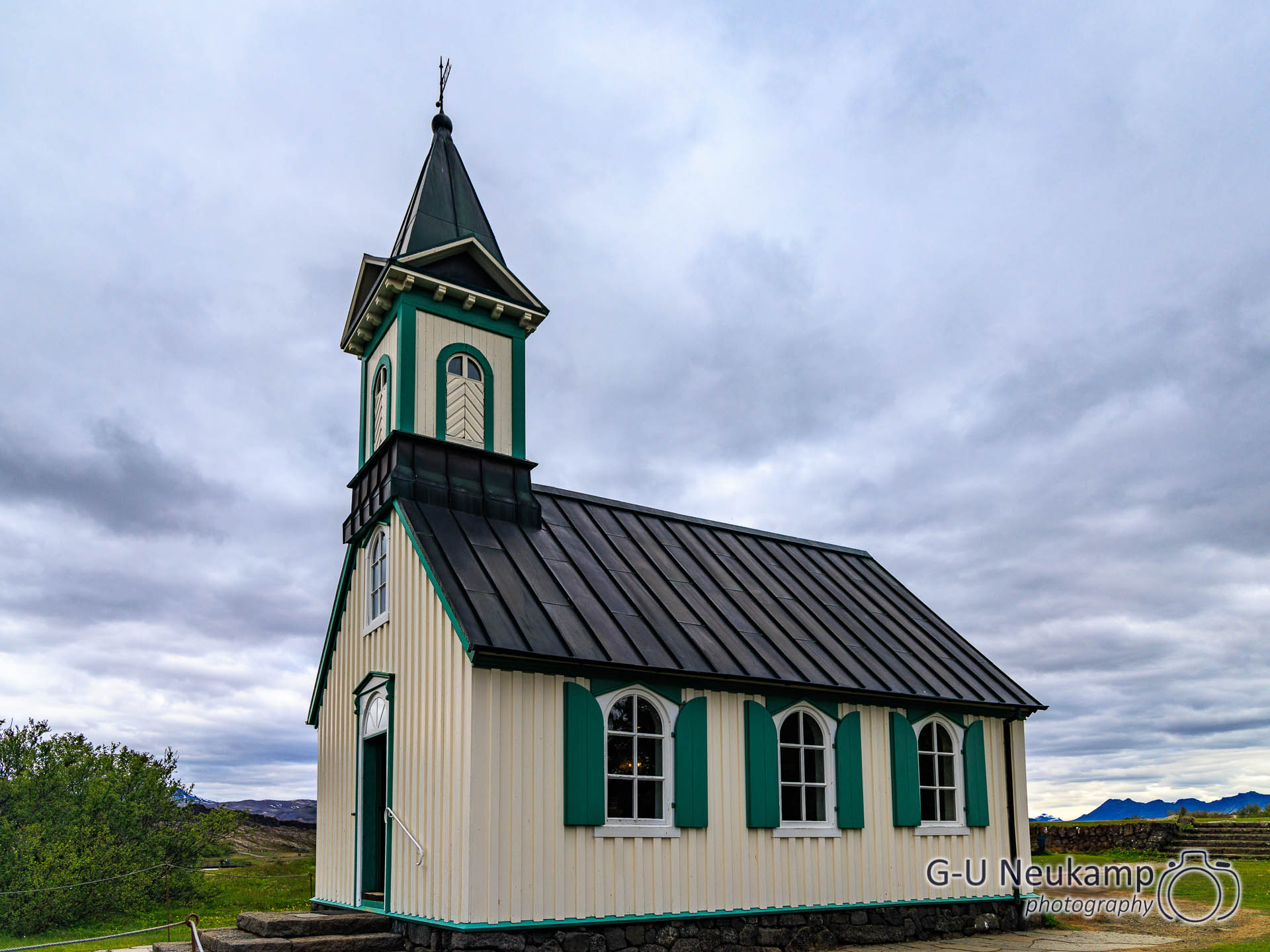
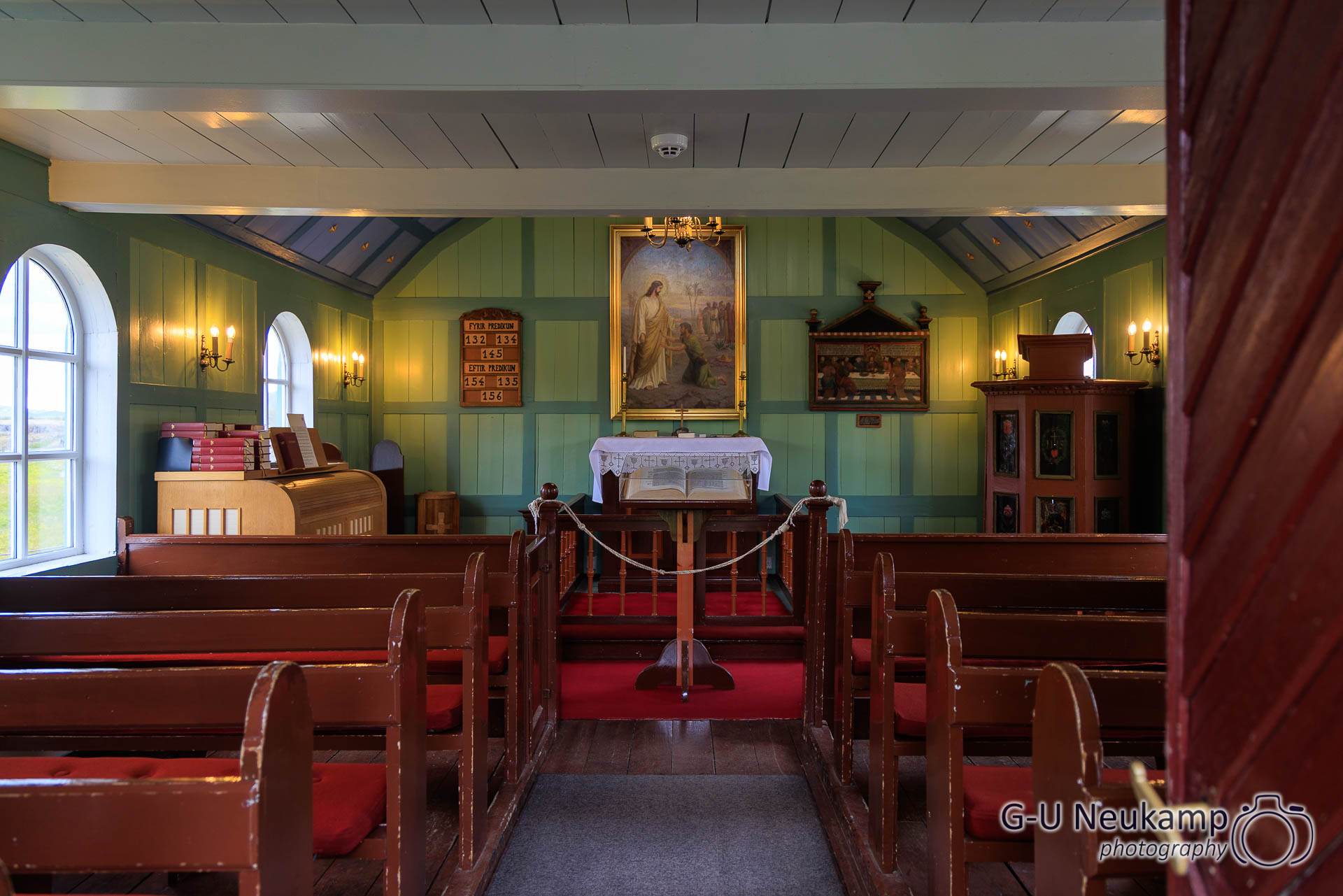
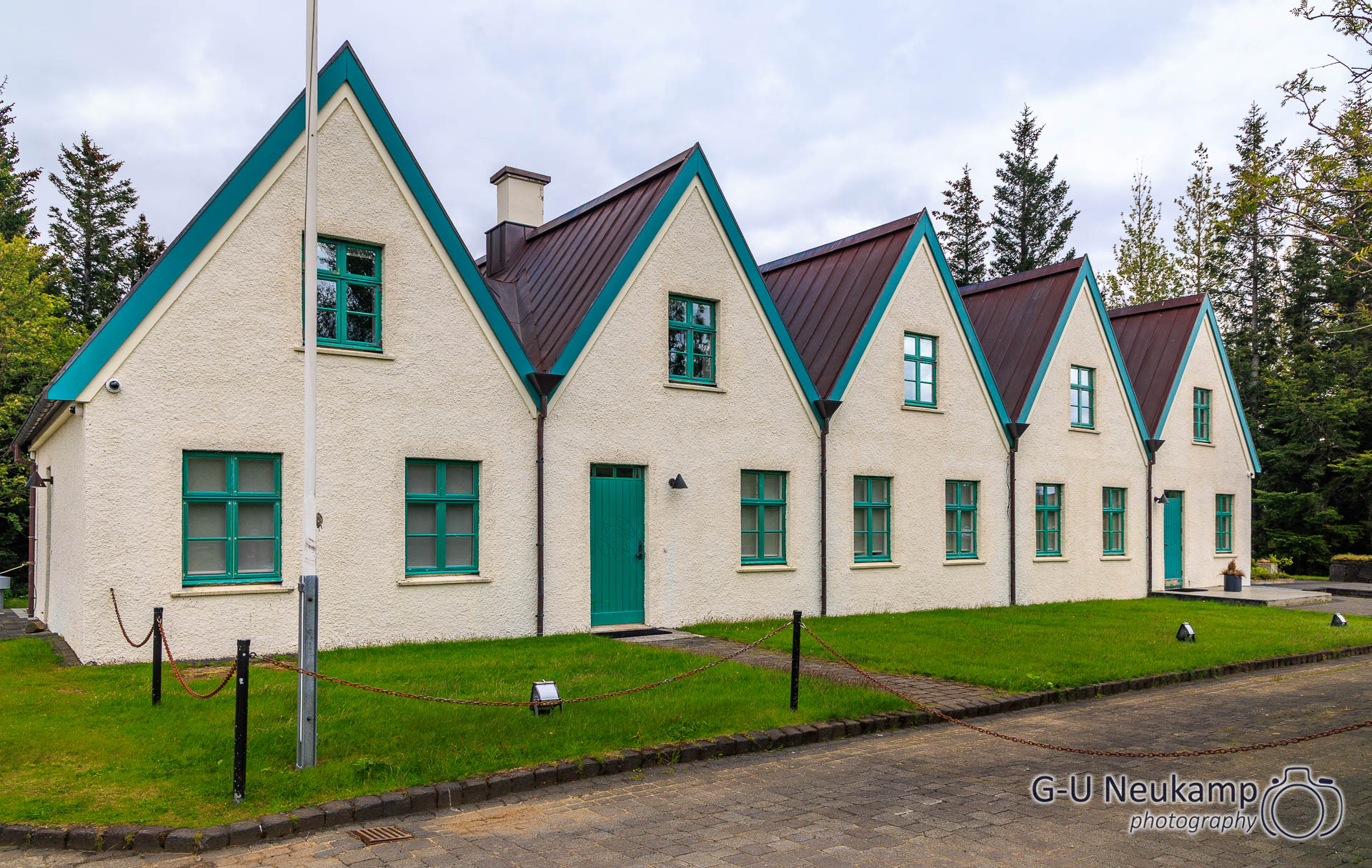
After visiting the first waterfall, Öxarárfoss in Þingvellir National Park, we sat down with a coffee and a few cinnamon rolls in the comfort of our mobile home and planned our next adventures. It’s really cool to travel in a camper!
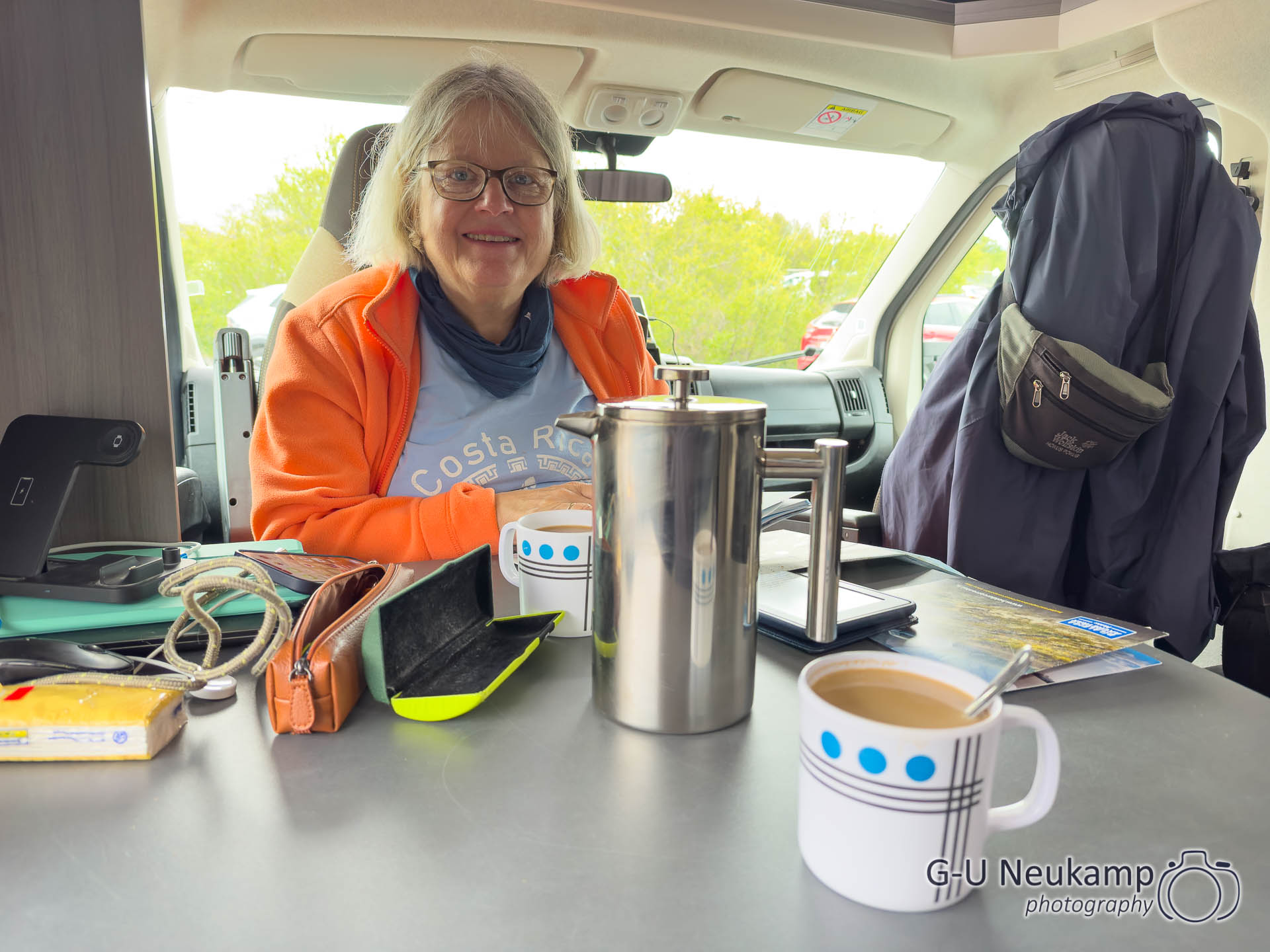
After a short break, we continued to Geysir and Strokkur. The geyser called “Geysir” has been dormant for a long time, and apart from its steam, there was little to see.
The Great Geyser was first mentioned in 1294, when a strong earthquake shook the already known springs of Haukadalur and significantly altered the geological activity. In 1647, it was first described by Bishop Brynjólfur Sveinsson under the name Geysir. As early as the 17th century, it was recognized that the activity of the spring must be directly related to earthquakes. In 1845, it reached a height of 170 meters. Its eruptions usually reached heights of up to 60 meters. The Great Geysir ceased its activity in 1915. It only became active again for a few years in 1935, before going dormant for a long period.
By the way, it’s the namesake for all geysers around the world. The word “geyser” comes from the Icelandic verb “geysa,” which means “to gush,” “to spurt,” or “to flow wildly.” The name was adopted from Icelandic into english and other languages in the 19th century and then came to be used to describe all similar hydrothermal phenomena worldwide.
The neighboring Strokkur geyser, on the other hand, provided a spectacular show - and did so approximately every 10 minutes.
And finally, we continued along the Golden Circle to Gulfoss. It was cold, windy, and quite loud there. The Hvítá River plunges down two steps here - 11 and 21 meters high - into an impressive gorge that is up to 70 meters deep.
The enormous volume of water is particularly impressive: on average, around 109 m³ per second rush down into the depths, and even more in summer. The gorge was formed over thousands of years by the interaction of water and ice. Twice in the 20th century – in 1930 and 1948 – it was completely flooded by glacier runs.
Sigríður Tómasdóttir – the woman who saved Gullfoss
The fact that Gullfoss can still be seen in its original form today is not a matter of course. At the beginning of the 20th century, an English company planned to build a hydroelectric power station here. The waterfall had already been leased, and a dam seemed only a matter of time.
Sigríður Tómasdóttir, a farmer’s wife from the nearby Brattholt farm, campaigned tirelessly against this project. With the support of lawyer Sveinn Björnsson, who later became president of Iceland, she fought a long legal battle. When the situation seemed hopeless, she even threatened to throw herself into the waters. In the end, the lease agreement failed – precisely because of a late payment – and the waterfall returned to state ownership.
Today, a stone plaque at the waterfall commemorates her efforts. Later plans to use the water for energy were also rejected. Since 1979, Gullfoss has been officially protected as a nature reserve and belongs to the Icelandic state.
Here are some pictures of Gulfoss:
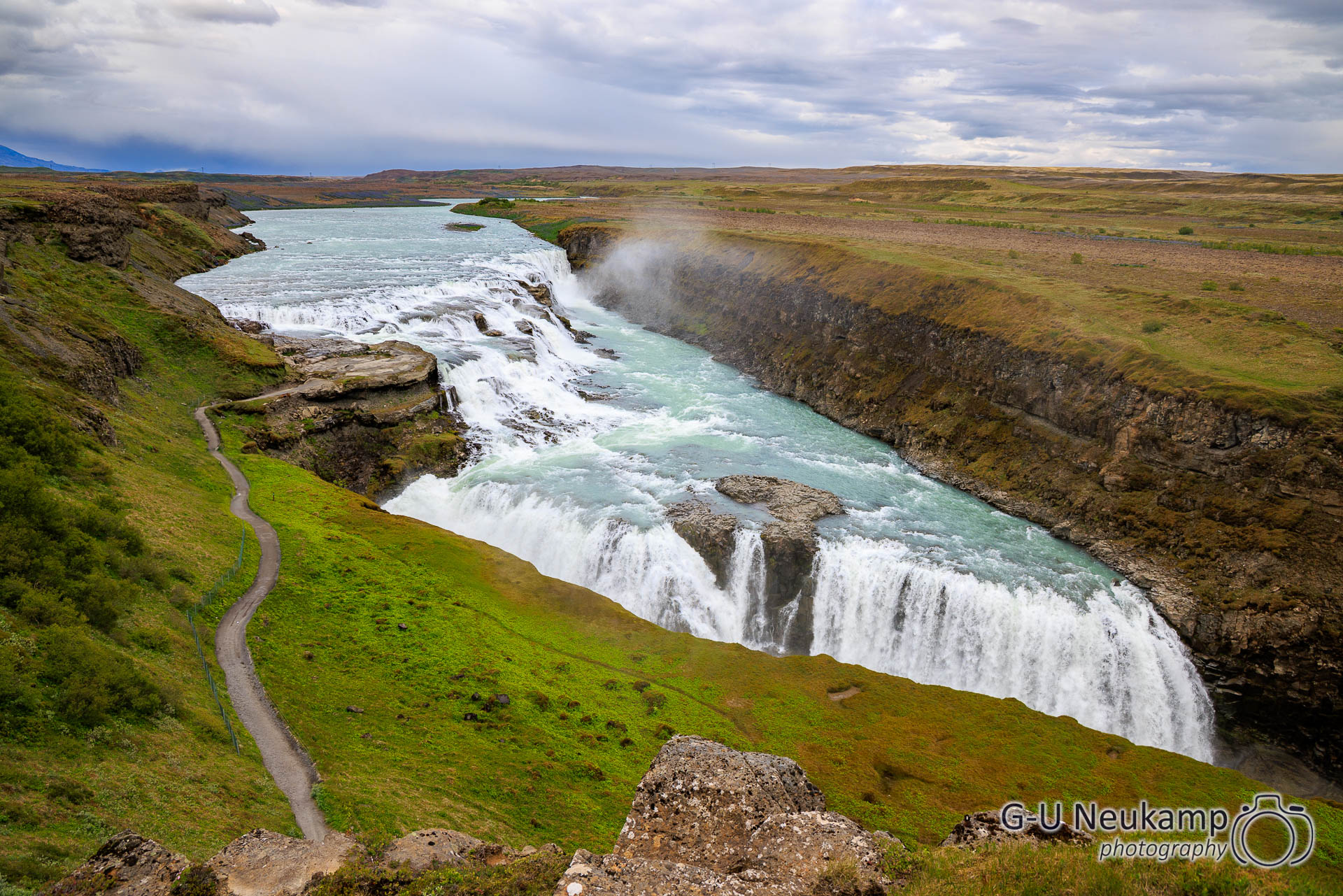
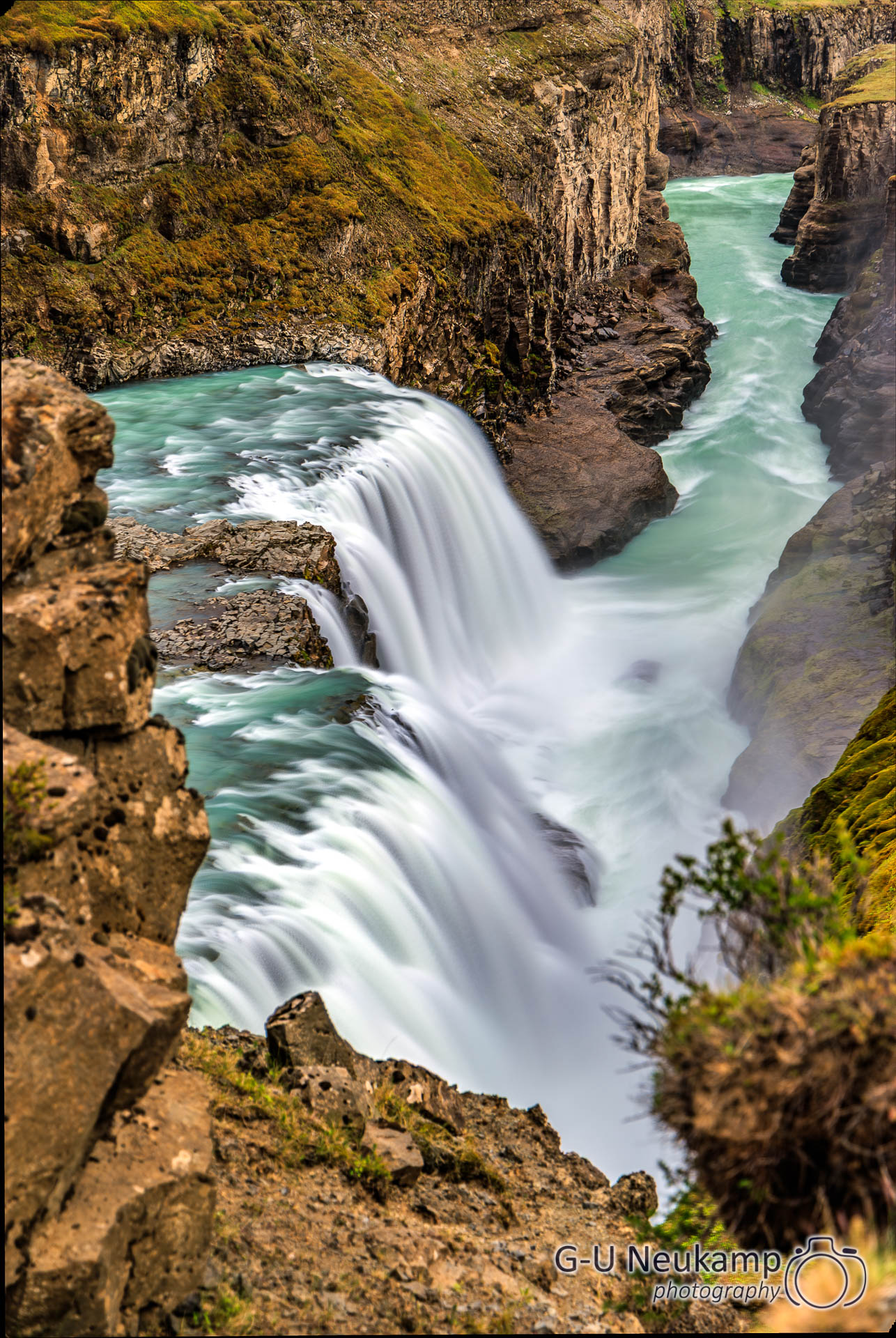
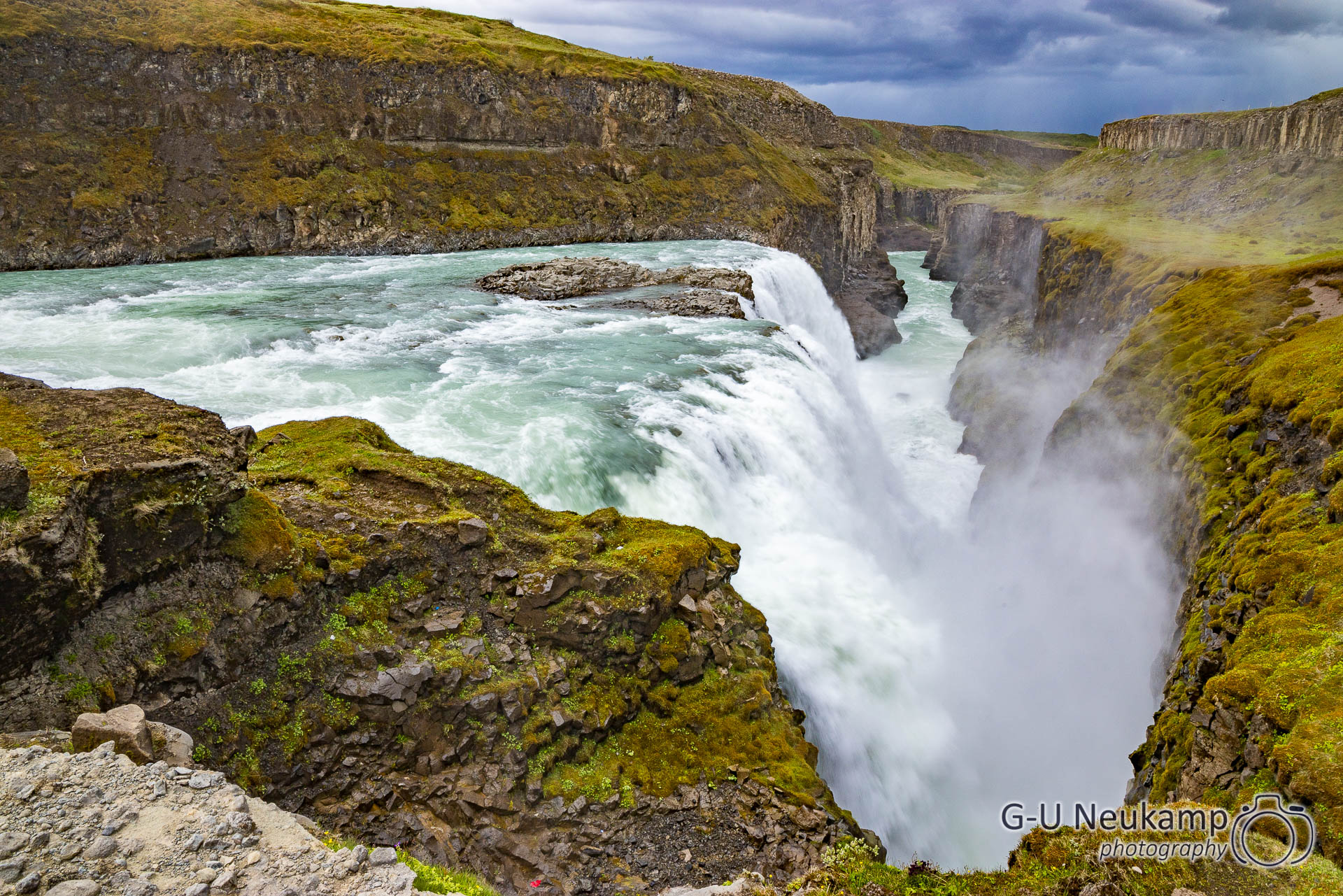
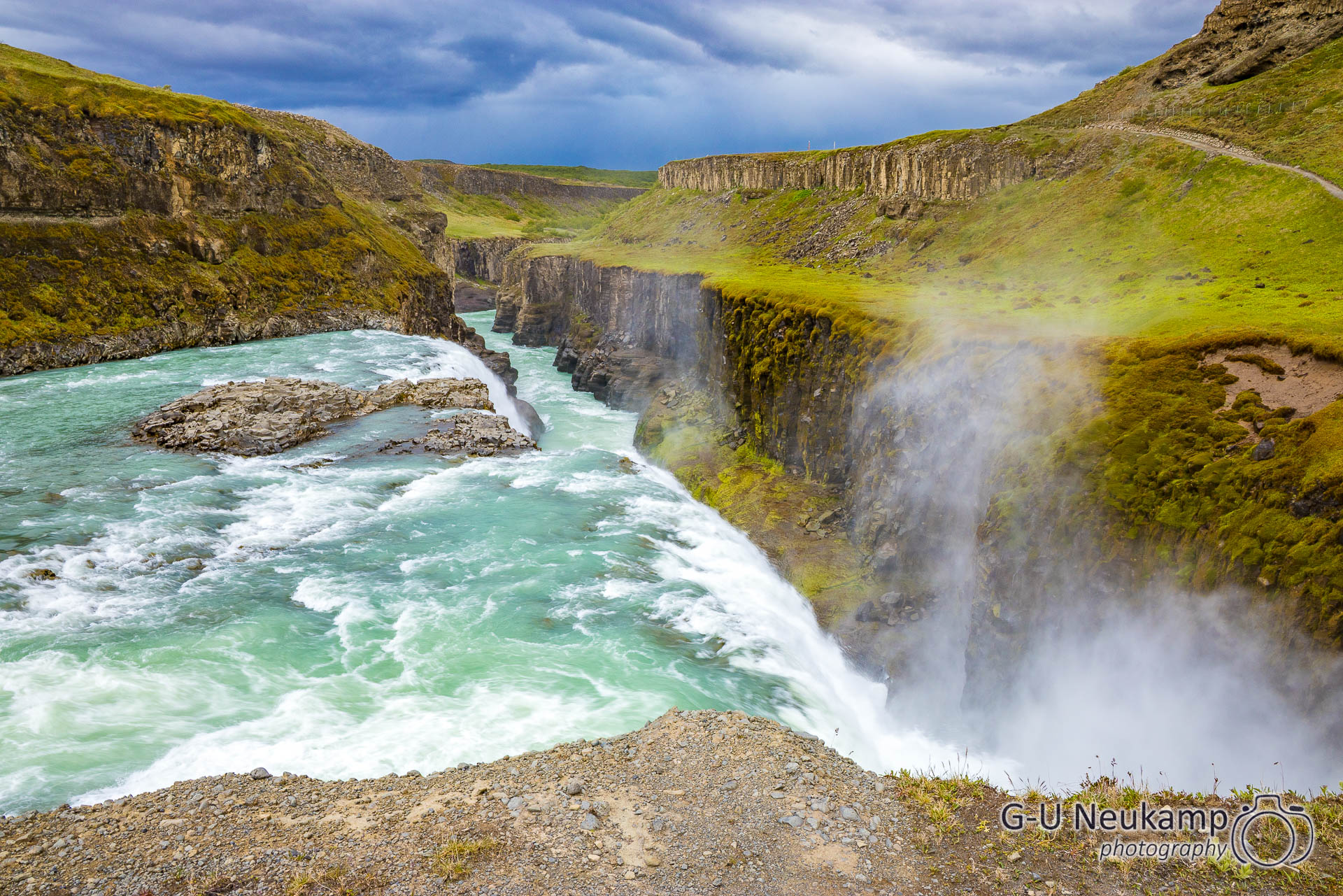
There were also some imposing 8x8 vehicles for off-road tours parked in the parking lot. Until now, I had only seen these vehicles on television with intercontinental missiles on their backs. I much prefer these versions here:
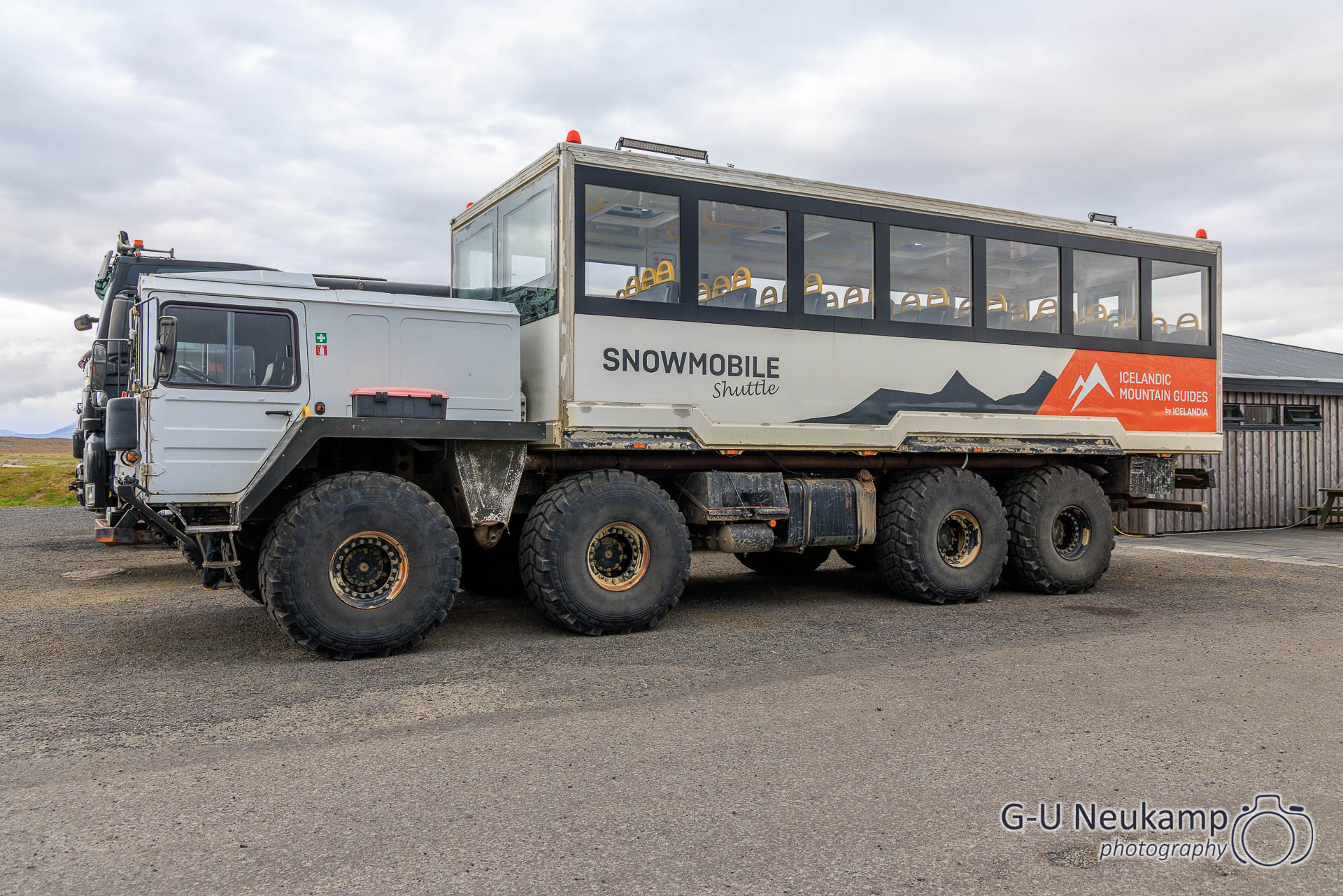
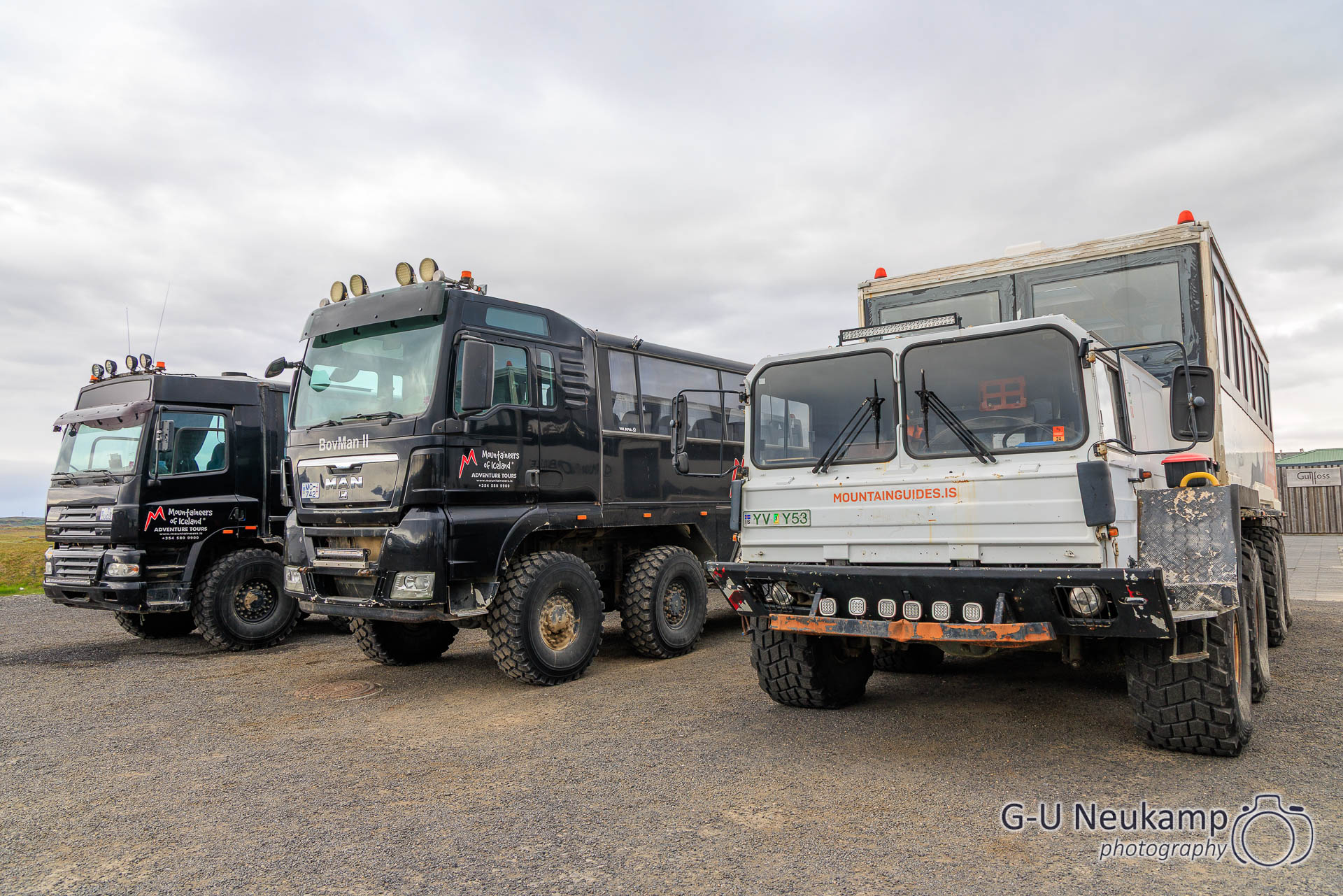
We then looked for a campsite. We chose the Flúðir camping site. The site was huge and we found a good spot. After the usual preparations (connecting to electricity, leveling the vehicle with ramps), we cooked the classic camper meal: spaghetti Bolognese. We started with a delicious salad. We enjoyed a glass of red wine 🍷 from the shop at Keflavik Airport. Delicious!
